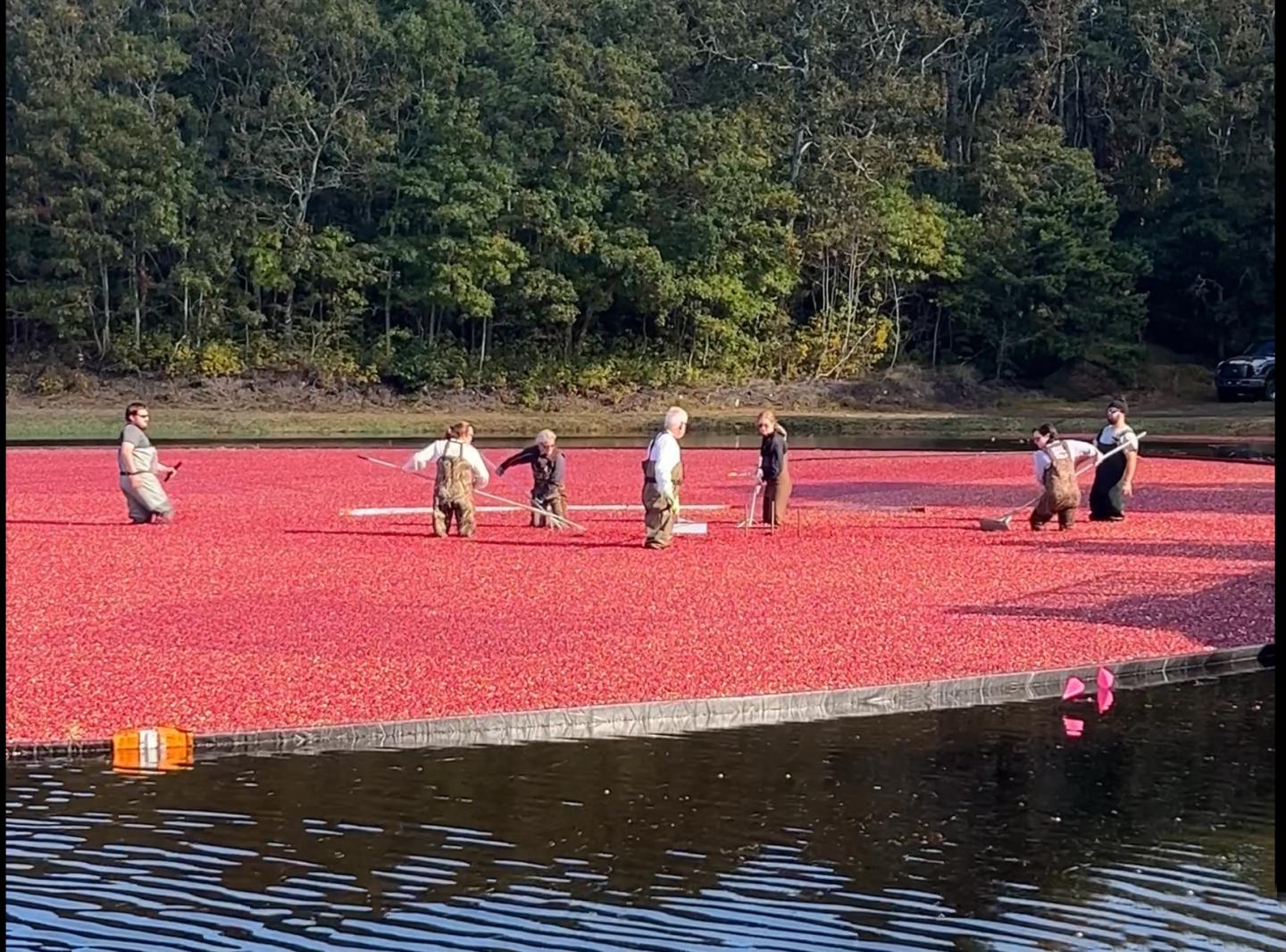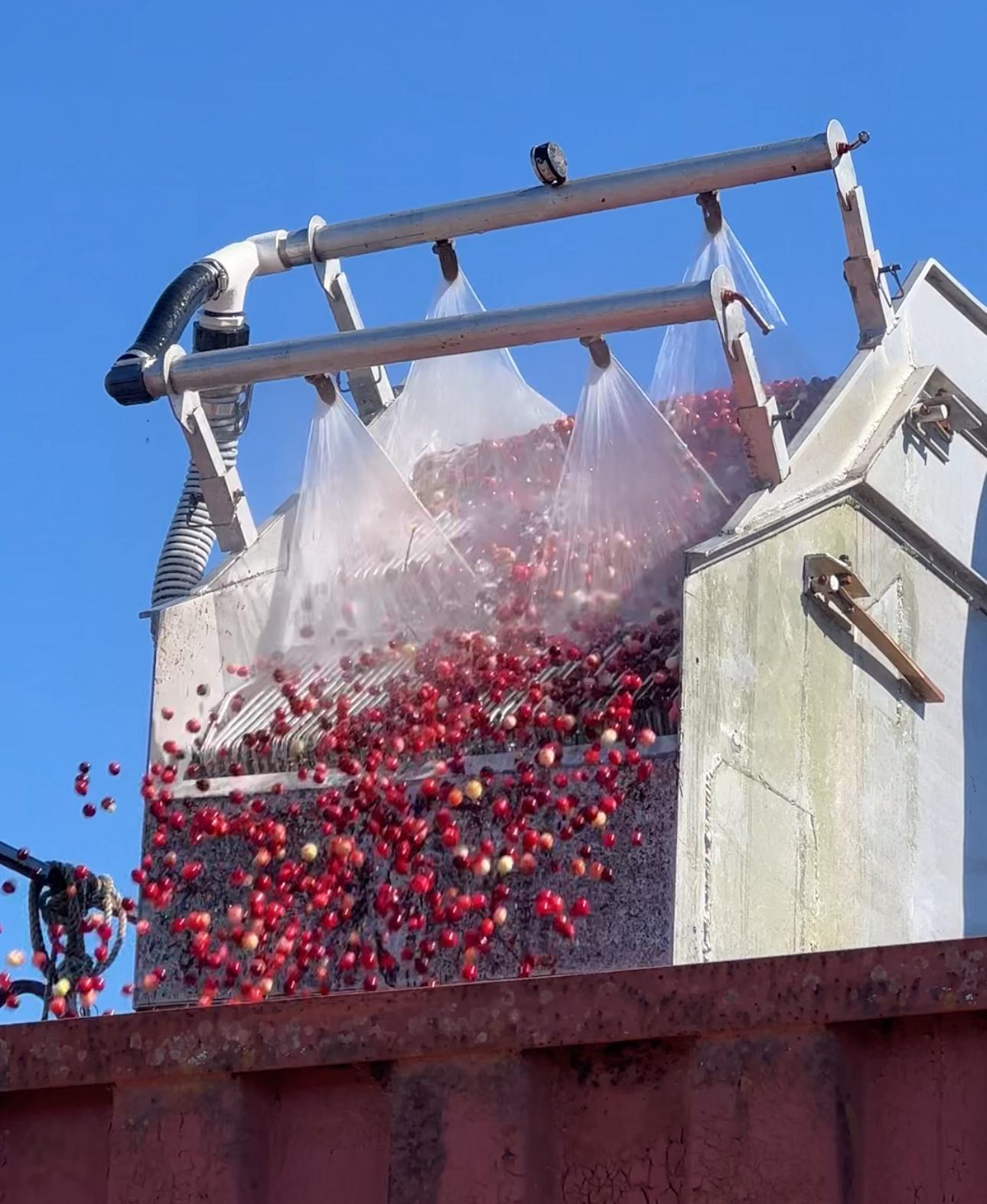
Cape Cod Cranberry Harvest
The cultivation and harvest of cranberries on Cape Cod with their bright colors filling local bogs throughout the fall are part of the rich history and cultural significance which impact the Cape’s agriculture, economy, and community development. Our guests love visiting the Inn during this colorful fall season . . . exploring the area to see local bogs, taking guided tours and sometimes even helping in the bogs with the harvest! There are many menu items, cocktails and even spa treatments that incorporate cranberries.
For more details on cranberry-themed activities and Chatham Bars Inn's three Cranberry Season Escape packages for Fall 2025, please click here.
Read below to learn more about cranberry bogs, harvesting season on Cape Cod and some fun facts about Cranberry Season.
How Does a Cranberry Harvest Work?
More than 90% of the cranberry crop is wet harvested which is the fascinating process you’ll see if stopping by a bog on Cape Cod:
*Cranberries have pockets of air inside the fruit. Because of this, cranberries float in water, and thus, the bogs can be flooded to aid in removal of fruit from the vines.
*Water reels, nicknamed “egg-beaters” are used to stir up the water in the bogs. By this action, cranberries are dislodged from the vines and float to the surface of the water.
*Wooden or plastic “booms” are used to round up the berries, which are then lifted by conveyor or pumped into a truck to take them to the receiving station for cleaning.

How are the Wet-Harvested Cranberries Used?
*Cranberry Juice: Freshly pressed cranberry juice is a staple product, known for its tart flavor and health benefits, including high antioxidant content.
*Cranberry Sauce: A classic accompaniment to Thanksgiving meals, Cape Cod's cranberry sauce is often made from locally harvested berries, providing a fresh and vibrant taste.
*Dried Cranberries: Often referred to as “craisins”, these are popular for snacking and as an ingredient in salads, trail mixes, and baked goods.
8 Fun Facts about Cranberries on Cape Cod
1 Historical Significance: Cranberries have been cultivated on Cape Cod for over 200 years. The first successful commercial cultivation was credited to Captain Henry Hall in 1816, who developed methods to enhance production. Cape Cod's sandy, acidic soil and abundant freshwater supply from ponds and bogs provide ideal conditions for cranberry cultivation. These factors contribute to the region being one of the largest producers of cranberries in the United States.
2 Harvest Season: Cranberries are typically harvested from September to November, with peak harvesting occurring in October. This is when the vibrant red berries are most abundant and ready for collection.
3 Native American Roots: Cranberries are one of only three fruits native to North America, and Native Americans used them for various purposes, including food preservation and medicinal uses. They called cranberries "sassamanesh" and mixed them with other ingredients to create pemmican, an early form of energy bar.
4 Cranberry Festivals: Cape Cod hosts vibrant cranberry harvest festivals that attract visitors with activities such as bog tours, cooking demonstrations, live music, and competitions. These festivals celebrate the region's agricultural heritage and the cranberry's role in local culture.
5 Health Benefits: Cranberries are rich in vitamin C and have been historically used to prevent scurvy during long sea voyages. They also contain antioxidants that contribute to various health benefits, including oral health.
6. Production Statistics: Approximately 400 million pounds of cranberries are consumed in the U.S. each year, with a significant portion being enjoyed during Thanksgiving week. Interestingly, about 70% of the world's cranberries are produced by Ocean Spray, a cooperative founded in 1930. Massachusetts is home to 300+ cranberry farmers, 14,000+ acres of cranberry bogs, and 65,000+ acres of associated open space.
7. Family Farms: Many cranberry farms on Cape Cod are family-owned and multi-generational, with some families having worked the same land for over a century. This tradition highlights the importance of community and family in cranberry farming. As late as 1927, the cranberry harvest remained so vital to local and state economies that Massachusetts children could be excused from school to work the bogs during harvest season.
8 Railroad Connection: The Cape Cod Central Railroad, which reached Orleans in 1865, played a crucial role in the cranberry industry. Many train depots were surrounded by bogs, and some growers even built their bog houses within earshot of the stations.
Join us this fall to celebrate Cranberry Season on Cape Cod!



